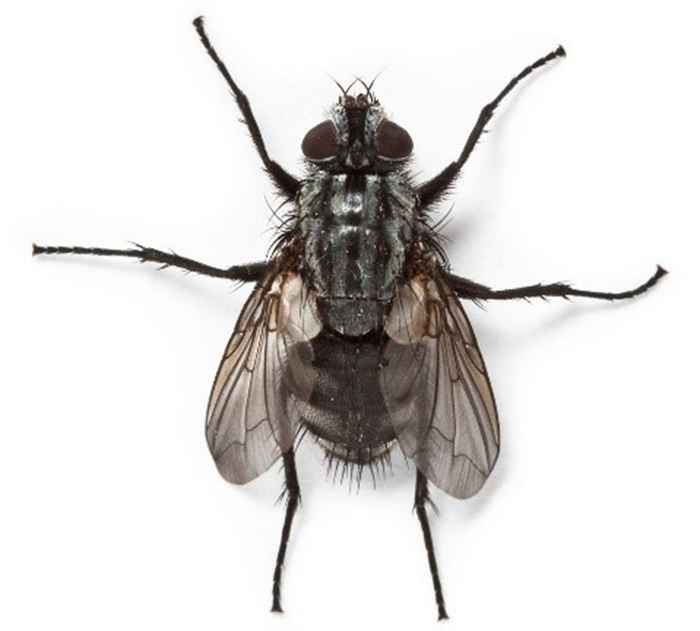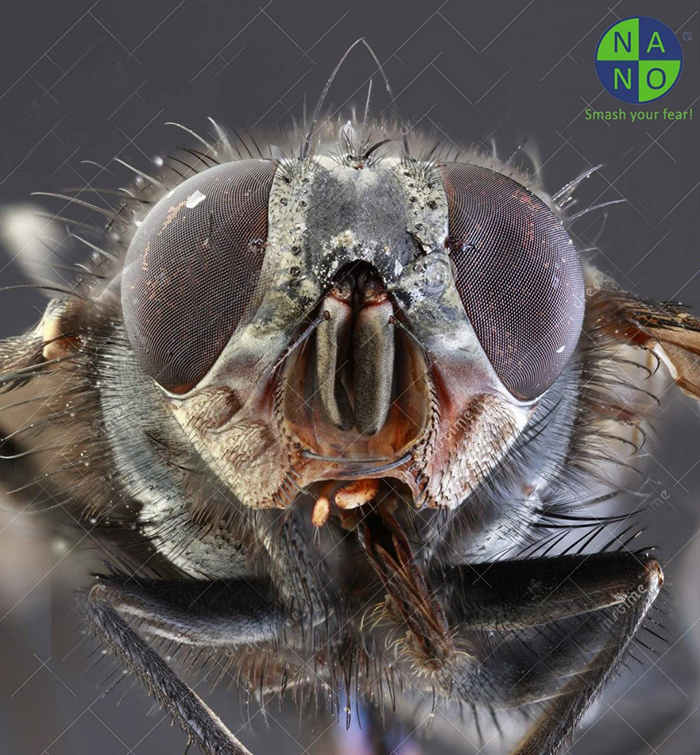House fly
Facts, identification & control
Latin name: Musca domestica
Overview

Commonly gray, 4 – 7.5 mm in length with four black stripes on the thorax.
Activity, food and habit
They prefer rest on corners, edges or thin objects. In homes, they spend all their time resting on floors, walls and ceilings. In nature, they will rest on plants, grounds, garbage,… Those places which they rest in the evening are near food sources and 1.5 – 4.5 mm off the ground.
Their food is very various, including human food, animal food and carcasses, garbage and excrement.

Reproduction
Most of house fly eggs are laid in any warm and moist material that supply suitable food for the larvae. The female can lay a total of 5 – 6 batches of 75 – 100 eggs. In warm weather, these eggs hatch in 12 – 24. Read the growth and development process of house fly.
Sign of infestation
The adult flies are the most common sign of activity. We can observe larvae when they crawl out of the breeding material to pupate. Lastly, sometime the pupae themselves may sometimes be seen nearby breeding material.
More information
Ecological characteristics of house flies
The average life span of a house fly living in nature is less than a month. They pass through the egg, larval and pupal stage in 10 days, after that they become adult flies. They stop developing after emerging from their pupae.
All house fly body is covered with small hairs which serve as taste organs. House flies have compound eyes which are extremely complex: thousands of individual lenses allow them a wide field of vision. House files can be carriers of various diseases. They can transfer more than 100 pathogens which cause typhoid, tuberculosis, cholera, dysentery. Pathogenic microorganisms cling their legs and mouth when they feed on feces, trash and other decaying material.

House fly control
House flies can be a real nuisance when they are flying around. (Read Impaction of house flies on our life). In addition, they transmit many diseases so that house fly control is really important. House fly control is not always as easy as it sounds. We have to combine more methods than only using swatter. Flies control have many steps which are conducted by Nano Vina.
The first step is determining the pest exactly. It is easy to confuse between house files with others. They may be similar in appearance but we need to apply different methods. Nano Vina technician–Navi man will identify them. The most important thing that we need to remember is that we have to determine where flies lay eggs. They are usually in unclosed trash or pet’s dishes. However, the house fly breeding site could be something that is not obvious. Those places which have fly eggs have to clean or remove. Otherwise, they continue disturbing the home owners.
Navi Man is trained and practice professionally in order to locate places in which the flies lay eggs when he surveys. In addition, we will recommend your structures if they have problems such as torn grating or broken mirrors.
The next step is wiping out adult flies. Depending on the situation, Navi Man will choose appropriate methods such as baits, fly traps or chemicals. Equipment and facilities are always ready to use. He or she is trained, practice in order to apply appropriate methods. Many premises recognize that the best way saving time and labor is contacting with Nano Vina to control flies.


